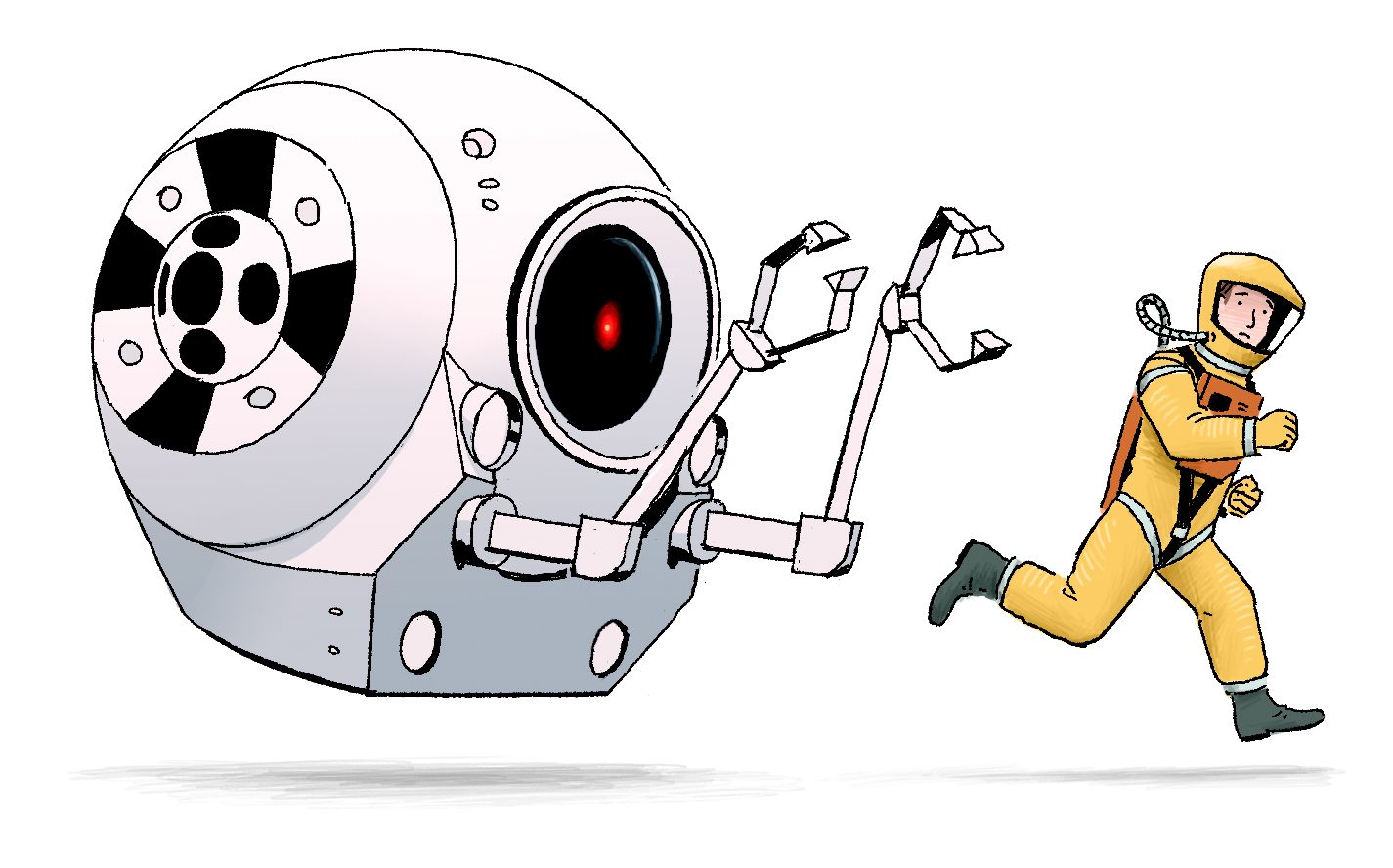Inbox 92

Editor’s Letter
Welcome to the Lent Term edition of CAM. As I write this, countries are discussing vaccine sharing – and hoarding. Hard borders seem more relevant than ever before. But as the world closes in, many of us long to explore different places, cultures and ways of being. And so, we report on the work of Professor Esra Özyürek, whose research explores the experiences of German Christians who have converted to Islam – and of Muslims who have migrated to Germany.
Closer to home, assessments of the UK government’s performance over the past year are stacking up. But what if the system itself stands in the way of success? We explore whether, after 750 years, the mother of parliaments needs reform – and we examine why government procurement (whether of lunches or PPE) so often goes wrong.
Finally, some unadulterated good news. Professor Rebecca Fitzgerald has invented an ingenious device – a cytosponge – that has the potential to transform cancer care. Her work is truly revolutionary, we tell the story of how a passion for understanding and then solving intractable problems led to a ground-breaking discovery.
On these topics – and on all things Cambridge related – we look forward to your contribution to the debate, by post, email or on social media.
Mira Katbamna (Caius 1995)
Inbox
Batteries
David Odling (CAM 91) is quite right to raise the important, often overlooked and probably unpopular point about the poor energy density of batteries. From the original lead-acid car battery, which has been in use for well over 100 years, energy density has improved roughly six times to get to today’s lithium batteries. Unfortunately, to match hydrocarbon fuels, the lithium battery would need to improve a further 30 times. So: secure employment possibilities in battery R&D for the next 500 years? And since we are already using lithium, one of the lightest and most chemically active elements, the periodic table has very little to offer to assist this endeavour.
A vital feature of efficient vehicles has always been a low weight, so the electric car falls at the first hurdle with its enormously heavy battery. Comprehensive, whole-life analysis shows that a modern, small, lightweight, petrol car produces fewer emissions and generates less pollution than almost all electric cars currently available. Speaking as an engineer I do not think it will make any sense to replace my little petrol car with a battery-electric one any time soon – if ever.
Barry Dawson (Trinity Hall 1973)
News
I read (CAM 91) that the Vice-Chancellor has announced ‘Cambridge Zero’, the University’s target of net zero emissions by 2038.
At the Oxford Farming Conference in January 2019, NFU President Minette Batters announced the NFU’s ambition to achieve net zero for agriculture by 2040.
I often visit the villages of Northampton and as a retired farmer and conservationist I take an interest in the countryside. After driving through a particularly featureless area of intensive arable farmland, I was chatting to a villager who complained that all the surrounding land belonged to an ‘Oxbridge’ college but the tenant apparently had no interest in conservation, net zero…
It would seem that Oxbridge and the NFU have similar, admirable goals. However, the universities have not yet communicated this to their tenants; neither has the Union communicated to its members. Perhaps the Vice-Chancellor could assure readers that the university’s tenants will soon be made aware of the climate emergency and the important role they play in its mitigation.
Rupert Knowles (Selwyn 1962)
Settling down to read the latest issue of CAM, I was very excited to see my collaborators Dr Paul Rimmer and Professor Jane Greaves features on page 5 – a wonderful Deconstructed on the recent paper Jane’s team published about the discovery of Phosphine on Venus. I was also a member of that team – and in an almost full circle of my scientific life to date, we actually referenced an original paper published by my PhD advisor, Professor Paul Davies, in the Department of Chemistry, who was the first to measure and report on (still the most accurate) value of the rotational constant of Phosphine. This vital piece of molecular data is imperative to predicting the Phosphine spectrum and the position of the line detected! I know Jane undertook a huge amount of the Venus work whilst on sabbatical in Cambridge – and it was exciting to think even more links emerge – alumni and Cambridge professors playing a role too.
Helen Fraser (Jesus 1994)
Fitzbillies continued…
As an American student at Cambridge in the ‘70s, my favourite place in town, of course, was Fitzbillies. When my parents visited during my first year, we feasted on Chelsea buns and my father rhapsodised that they were the best thing he’d ever eaten. So, after they returned home to Washington, I sent him a box of Chelseas as a special treat; realising that they were perishable, I Federal Expressed them for immediate delivery. He thanked me, but not so subtly reminded me that he was still paying all my bills and that the delicious buns were costing him about five dollars a bite.
Ken Ludwig (Trinity 1973)
Student life
I was interested to read about Women’s Cricket in the latest CAM. It was of particular interest as I may be one of the few men (if not the only one) to have played for them.
In the mid-1970s there was a social fixture between a Corpus XI and the University Women. As I, an intended spectator, had made the dual mistakes of wearing white and having long hair, I made up the numbers, in spite of missing an X chromosome.
In deference to the social nature of the event, the men were allowed only a short run-up (four paces, I think). But no such allowance was made for me, and the pent-up hostility of their fast bowlers was unleashed. They were no doubt disappointed that I lasted for so few (I think three balls – my memory is mercifully sketchy on this traumatic episode). The first missed everything, the second hit my bat (with little or no direction on my part) and went to the boundary. The third hit the stumps, to my relief and to the chagrin of the fast bowlers, who had to revert to a gentler pace.
Bob Knowles (Corpus 1971)
Activism
Your article about activism (CAM 91) missed the critical point that when democratic institutions are failing, activism is often the only recourse for those of us affected. You could have mentioned, for example, the enormous democratic deficit in the UK. The current government obtained 56 per cent of the seats in the Commons with less than 44 per cent of the vote. Most likely there will not be another general election until May 2024. Constitutional checks and balances that exist in most other developed nations are already minimal and are under attack. Policy blunders in various fields affect people in a direct and personal way to a perhaps unprecedented degree. In these circumstances, how else, other than by activism, can injustices be remedied?
Frank Wilson (St John’s 1976)

The singularity
I note that HAL is described as “Dry, genial, murderous”. “Murderous” suggests desire to murder; my understanding of the premise is that undue emphasis was placed on the directive given to HAL to protect the mission at all costs. The ‘logical’ consequence of this was the unfortunate deaths, effectively by neglect, of the other crew members. Ok, Frank was pushed!
Incidentally, I liked the Agent Smiths from Corpus, Emma and Queens’!
Mike Whittaker (St Catharine’s 1976)
Your excellent article on computers and intelligence (CAM 91) makes me want you to go further. What are they, in essence? I find the term artificial intelligence too constricting: the tools and machines we make nowadays go beyond being just thinkers – they are a long way to becoming a new, inorganic form of life. Their intelligence, being human-derived, is arguably the least artificial thing about them.
Paul Lovatt Smith (Robinson 1980)
Gates Cambridge
I love the variety and breadth of CAM, and the fact that I hear about all sorts of things I would never otherwise read about. I enjoyed the piece on the Gates Cambridge Scholarship, which reminded me of my own experience getting a Leverhulme Trust grant for the first year of my PhD. My research was on the Vikings, but the candidates being interviewed before and after me were looking at the cheetah population in Zimbabwe and forestry in Nepal. The Secretary told me they were willing to look at any proposal, but they did suspect that an applicant wanting to study surfing on Bondi beach perhaps had mixed motives! Keep up the good work
Simon Coupland (St John’s 1978)
I love reading your magazine as it reassures me that great minds are at work trying to solve the world’s myriad problems.
I was interested to read about Jennifer Jia’s work making sanitary pads from the remnants of fast fashion, which as you say, deals with both period poverty and also concerns about the waste and the environment.
However, it highlighted an issue which particularly worries me (as no one seems to be doing anything about it): plastic dust in the environment.
Much is trumpeted about recycling fabrics, because of course this is a good thing. However, man-made fibres such as polyester and nylon are another form of plastic and will not biodegrade. No one seems to realise that if you recycle and reuse plastic you are perpetuating the ability of that plastic to fragment into dust particles every time it is used.
Plastic litter can be binned; but how do we get rid of plastic dust? According to Greenpeace, 85 per cent of the microfibres washed up around the world’s shores are polyester. According to the New Scientist, the two main sources of plastic dust in the environment are clothing and then tyres.
In addition to the problem that the public does not yet realise that their lovely polyester fleeces are basically plastic, people also seem to think that plastic microparticles are only (!) a problem in the sea – not so! The land is now covered in plastic dust, although so far it is not visible to the human eye. Scientists have shown recently that plants are now taking up plastic microparticles from the soil. We are sleepwalking towards an environmental problem that we will not be able to solve in future, for how do you remove plastic dust from the land?
Unless and until synthetic fibres are developed which can biodegrade as well as natural fibres, we should use natural fibres all the time. Sports clothing is a particular problem. During the time my boys were at school, (2004-18) their games kit went from being mainly cotton to 100 per cent plastic. I remember the successful campaign to cease the use of plastic carrier bags in supermarkets. Perhaps if people could realise that when they wear polyester they are wearing a carrier bag, the message would get through.
It is encouraging that there are many businesses out there trying to reduce the use of plastic in their products. However, the clothing industry seems to be going the other way – more and more clothes are being made of plastic or of materials that mix natural and synthetic fibres. Since recycling plastic clothing is not a solution, we should not use plastic for clothing in the first place. Wool, cotton (less environmentally harmful ways of producing cotton are being increasingly used these days) linen, hessian, bamboo, leather, sheepskin and lambskin (from animals that we eat) should all be used. (I know that there is vegan leather but sadly the vast majority of it is also plastic.)
So, I would like to know from Jennifer Jia: does she only use natural fibre fashion remnants? I do hope so! And if she uses biodegradable polymers (which are now available) for the waterproof elements in her pads, then her sanitary pads will be fully compostable (which really would be brilliant!)
Caroline (nee Cheshire) Ayers (Trinity Hall 1981)

Reel to reel
I was very interested in your ‘Reel to Reel’ article. My late husband, Martin Chadwick (Trinity Hall 1948), was an accomplished violinist and, as an undergraduate, played in a string quartet with [the conductor] Raymond Leppard (Trinity 1948). As a curate in London in the 1950s, he developed his interest in electronics and recording. He acquired two enormous reel to reel recorders and used a local studio where Ray Dolby (Pembroke 1957), with whom he became friends, was also experimenting. Martin returned to Trinity Hall in the late 1950s as chaplain and continued recording. Possibly the most adventurous project was recording CUMS concerts in King’s Chapel with microphones suspended on fishing line from the roof. What vast changes since then.
Glena Chadwick (Girton 1959)
Your article on the Tape Recording Society rings a bell! I recall that during my time there was a chap in King’s who had devised his own recording and amplifying system. This was of such force that he only got it up to half volume when he was required by the Proctors to remove his equipment, certainly beyond the Backs, and preferably out of the University altogether, because they were affeared he was going to hit the sound frequency of King’s College Chapel and blow out all the windows. I assume he went quietly!
Peter Benner (Downing 1956)
Despite the fame of the performers, when Yoko Ono and John Lennon appeared at Lady Mitchell Hall in 1969 (CAM 91) the audience was fairly sparse. As far as I remember, the act was highly experimental and improvised, owing its inspiration much more to Yoko than to John. Fortunately, the tape recording will be much more complete than my memory of something so long ago.
Anthony Matthew (Trinity 1962)
This idea must die
Dr Niamh Gallagher states ‘memory of British culpability in the 1840s [Irish] famine reigned strong in diasporic communities’ as if that alleged culpability was fact. However, the conclusion of Professor Robert Tombs, in his magisterial The English and Their History (2014) was: “A measured judgment is that the Whig government may have lacked foresight and generosity and may have been guilty of underestimating the human problems, but it was not guilty of either criminal negligence or of deliberate heartlessness.” Misrepresenting British history as bad, while all the rage now, also perverts our understanding of the past.
Jonathan King (Emmanuel 1976)
I was puzzled by Dr Gallagher’s suggestion that Irish history is largely absent from school curriculums. When I studied A level 19th century British history in the early 1960s, events in Ireland (catholic emancipation, famine, home rule, Curragh mutiny) formed a large part of the syllabus – one in which I had a strong interest in view of my own background. Maybe things have changed a lot since then – I would be interested to know.
Also of interest is the lack of any significant coverage among Ireland’s own historians of some of the less honourable episodes in recent Irish history. These include the murder by republicans of several hundreds of civilians, both Protestants and Union-supporting Catholics, during the period 1919-23, the forced expulsion, under threat, of tens of thousands of the same groups after independence, and the discrimination against the hundreds of thousands of returning Irish volunteers (the majority Catholic) who joined the British forces in both World Wars.
Added to this list is the failure to recognise the sacrifices of British sailors on the north Atlantic convoys, who risked their lives to keep Ireland as well as the United Kingdom supplied with essential items. This at a time when the Free State itself was pursuing a cynical policy of neutrality, denying the use of Irish ports and airfields to British convoy escorts, while being fully aware that a German victory would bring a rapid end to Ireland’s newly-won independence.
The British government’s record in Ireland over the centuries contains many shameful episodes, which are well documented. But this is no reason to ignore the more unfortunate and embarrassing events which reflect no credit on Ireland’s own governments and their republican antecedents.
Pat Murphy (Trinity Hall 1963)
Soundtrack
Thanks for fascinating reminder of days at the ADC. I rarely saw the shows but I heard them as I painted the scenery for the next show, underneath the stage. Just occasionally we would be startled by a flap in the stage being opened and an actor descending “downstairs.”
Although scenic design took precedence, I somehow scraped through to a Law Degree, thanks mainly I think to some brilliant lecturers who illuminated the Law so successfully.
John Ray (Emmanuel 1955)
This idea must die, CAM 90
The charity What About The Children is campaigning to provide a financial incentive, or brain-building grant, to encourage mothers to reduce their working hours from six months pregnancy onwards, in order to reduce stress on the mother and, therefore, the baby, and catalyse the all-important bonding with the child. We want to achieve a reversal to the recent increases in incidence of mental health problems and physical underlying health issues, which have proved to give poorer outcomes from Covid infections. When the brain development is damaged, physical health is also damaged.
Elizabeth Bland (Wolfson 1981)
Great to see @GirtonCollege alumna – and outstanding MCR president – @JenniferWJia in the new CAM! Her social venture Emporsand repurposes fashion waste into sanitary wear – empowering women and driving sustainability.
Sebastian Falk (Homerton 2011)
Write to us
We are always delighted to receive your emails, letters, tweets and facebook posts.
- By email
- cameditor@alumni.cam.ac.uk
- By writing
- CAM, 1 Quayside, Bridge Street, Cambridge, CB5 8AB
- By Twitter
- @Cambridge_Uni
- By Facebook
- facebook.com/cambridgealumni
Please mark your letter ‘For publication’. Letters may be edited for length.



